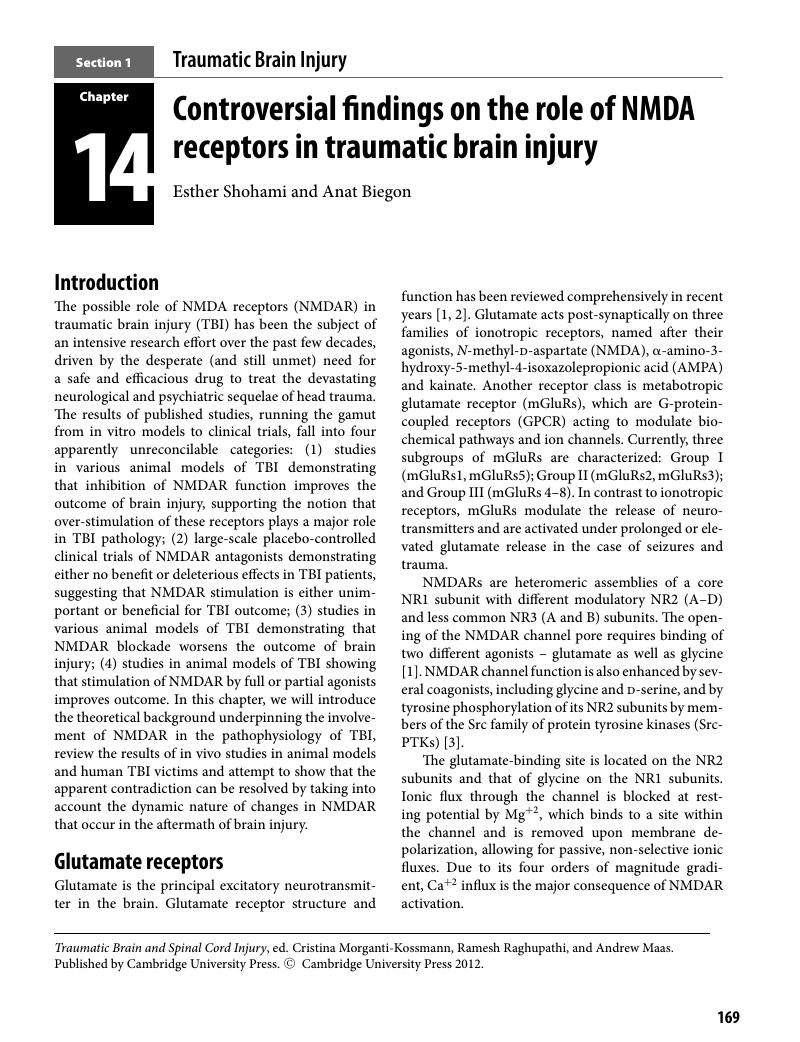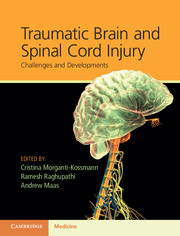Book contents
- Traumatic Brain and Spinal Cord Injury
- Traumatic Brain and Spinal Cord Injury
- Copyright page
- Dedication
- Contents
- Contributors
- Preface
- Section 1 Traumatic Brain Injury
- 1 Current evaluation of TBI epidemiologyin an ageing society with improved preventive measures
- 2 Neurotrauma:an emerging epidemic in low- and middle-income countries
- 3 Blast-inducedtraumatic brain injury and post-traumatic stress disorder
- 4 Psychological effects of mild traumatic brain injury: their nature and treatment
- 5 Developments of neuroimagingtechniques to diagnose and visualize white matter damage
- 6 New advances in monitoring the injuredbrain metabolism
- 7 Potential use and limitations of microdialysisfor monitoring of neurochemical changes after TBI
- 8 Metabolic and therapeutic differences in pediatric and adult TBI: implications for clinical care and therapeutic hypothermia
- 9 Utility of biomarkersfor diagnosis and prognosis of traumatic brain injury
- 10 Animal models of mild and severe TBI: what have we learned in the past 30 years?
- 11 Pediatric brain trauma: what do age-appropriate animal models teach us about the age-at-injury effect?
- 12 The complexity of traumatic axonal injury
- 13 Cerebral inflammation after traumatic injury: regulation of secondary damage, repair or both?
- 14 Controversial findings on the role of NMDA receptors in traumatic brain injury
- 15 Plasticity and recovery of the injured brain
- 16 Design and analysis of clinical trialsin TBI
- 17 Future perspectives for the treatment of traumatic brain injury patients: decompressive craniectomy, hypothermia and erythropoietin
- Section 2 Traumatic Spinal Injury
- Index
14 - Controversial findings on the role of NMDA receptors in traumatic brain injury
from Section 1 - Traumatic Brain Injury
Published online by Cambridge University Press: 05 August 2012
- Traumatic Brain and Spinal Cord Injury
- Traumatic Brain and Spinal Cord Injury
- Copyright page
- Dedication
- Contents
- Contributors
- Preface
- Section 1 Traumatic Brain Injury
- 1 Current evaluation of TBI epidemiologyin an ageing society with improved preventive measures
- 2 Neurotrauma:an emerging epidemic in low- and middle-income countries
- 3 Blast-inducedtraumatic brain injury and post-traumatic stress disorder
- 4 Psychological effects of mild traumatic brain injury: their nature and treatment
- 5 Developments of neuroimagingtechniques to diagnose and visualize white matter damage
- 6 New advances in monitoring the injuredbrain metabolism
- 7 Potential use and limitations of microdialysisfor monitoring of neurochemical changes after TBI
- 8 Metabolic and therapeutic differences in pediatric and adult TBI: implications for clinical care and therapeutic hypothermia
- 9 Utility of biomarkersfor diagnosis and prognosis of traumatic brain injury
- 10 Animal models of mild and severe TBI: what have we learned in the past 30 years?
- 11 Pediatric brain trauma: what do age-appropriate animal models teach us about the age-at-injury effect?
- 12 The complexity of traumatic axonal injury
- 13 Cerebral inflammation after traumatic injury: regulation of secondary damage, repair or both?
- 14 Controversial findings on the role of NMDA receptors in traumatic brain injury
- 15 Plasticity and recovery of the injured brain
- 16 Design and analysis of clinical trialsin TBI
- 17 Future perspectives for the treatment of traumatic brain injury patients: decompressive craniectomy, hypothermia and erythropoietin
- Section 2 Traumatic Spinal Injury
- Index
Summary

- Type
- Chapter
- Information
- Traumatic Brain and Spinal Cord InjuryChallenges and Developments, pp. 169 - 179Publisher: Cambridge University PressPrint publication year: 2012
- 1
- Cited by

